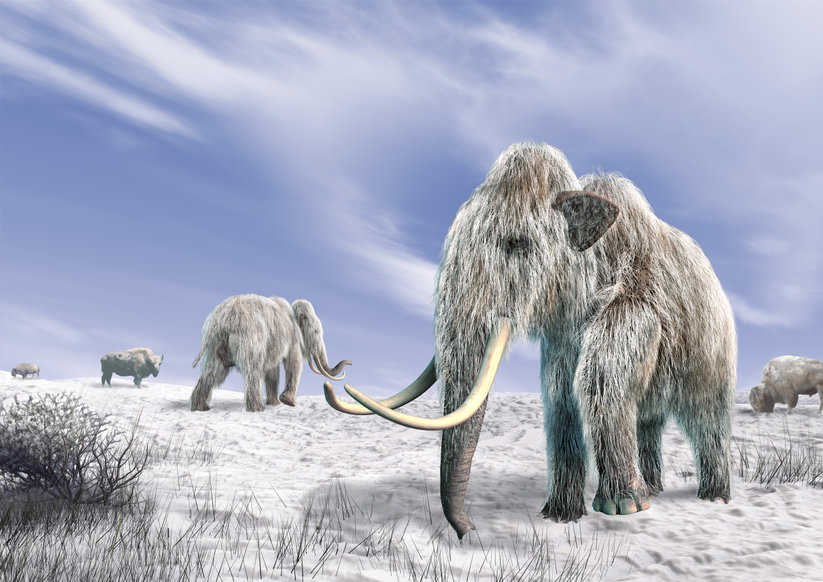By now, we all know the drill. The wildfires that have scorched millions of acres in the American West over the past decades are yet another sign of human-caused climate change.
But a new study by researchers at Yale University and the Utah Natural History Museum puts forward an entirely different explanation. According to the study, “Global Response of Fire Activity to Late Quaternary Grazer Extinctions,” today’s troubles can be traced to the mass extinction of giant herbivores between 50,000 and 6,000 years ago. Coinciding with the last Ice Age, woolly mammoths, giant bison, and other long-gone herbivores feasted on the lush grasslands of North America, South America, Australia, Africa, and elsewhere.
Published in the journal Science, the study examines the effects of the late Quaternary extension, which saw the giant herbivores gradually disappear.
“These extinctions led to a cascade of consequences,” said corresponding author Allison Karp in a news release. “Studying these effects helps us understand how herbivores shape global ecology today.”
South America was the hardest hit by the extinction, losing 83 percent of its large herbivore species, the most of all the continents. North America’s extinctions put it in second place, losing 68 percent of its big herbivore species. Australia and Africa saw losses of 44 percent and 22 percent, respectively.
Relationship between Extinctions and Wildfires in the Grasslands
The researchers set out to find if the extinction of these grazing species could have led to wildfires in grassy regions far into the future. Did the lack of large animals eating the grass create conditions favorable to wildfires?
To find out the answer, they examined charcoal data from lake sediments at 410 sites around the world, which contain evidence of historic fire data. They then compared these data with the percentage of large herbivores that went extinct.
It turns out that a correlation does exist. The researchers found that the continents that saw the largest number of big grazers go extinct – South America and North America – had the largest increase in fire activity. Conversely, Australia and Africa, which experienced much lower rates of extinctions, saw little change in grassland fire activity.
On the other hand, the extinction of species that fed on bushes and trees, such as mastodons and giant sloths, has had no effect on fires in woodlands.
The study’s authors say their research underscores the important role grazing livestock and herbivores play in mitigating wildfires in grasslands.
“This work really highlights how important grazers may be in shaping fire activity,” senior author Carla Staver said in a news release. “We need to pay close attention to these interactions if we want to accurately predict the future of fires.”
Grasslands in the Pleistocene and Afterwards
After the mass extinction of dinosaurs around 65 million years ago, mammals gradually took their place. Most of them started out no larger than mice, but over millions of years, some species evolved into the giant herbivores and their predators that thrived during the early and middle Pleistocene. At their peak, these creatures had to keep an eye out for the likes of Sabre-tooth cats and short-faced bears. But otherwise, their populations remained fairly stable until the last Ice Age came to an end, and contacts with human hunters became more frequent, and deadly for the large herbivores.
In North and South America, the grasslands, no longer subjected to the incessant grazing of wooly mammoths, giant bison, and the like, gradually expanded, particularly in what is now the United States west of the Mississippi River. In Sub-Saharan Africa, by contrast, grasslands have been held in check by such grazers as wilder beasts, zebras, cape buffalos, and gazelles.
The findings of the researchers at Yale and the Utah Natural History Museum may not be the final word on wildfires in grasslands. But the scientists asked questions that others hadn’t bothered to pose, and their work shows that nature has many surprises that can upend today’s fashionable political narratives.
